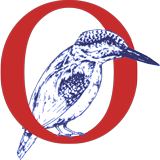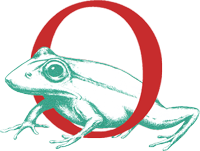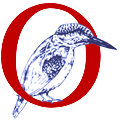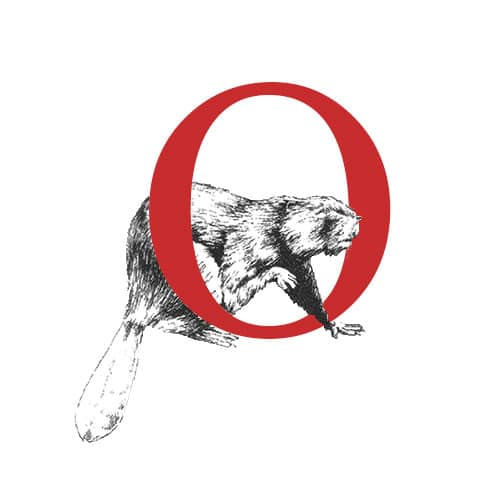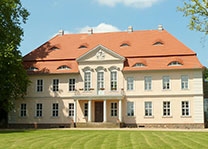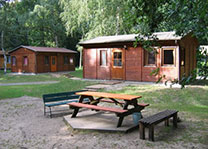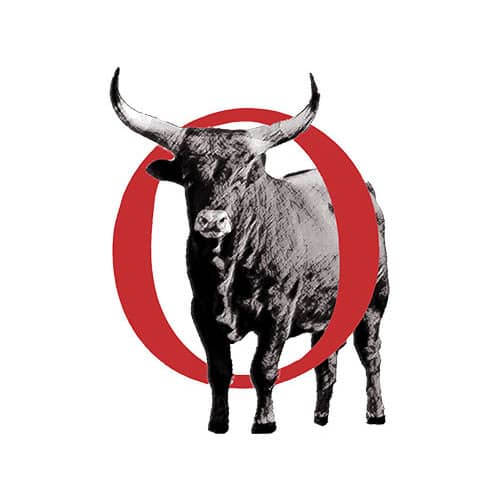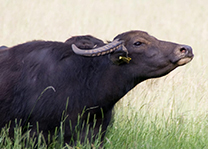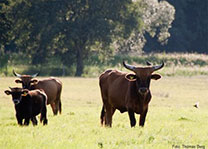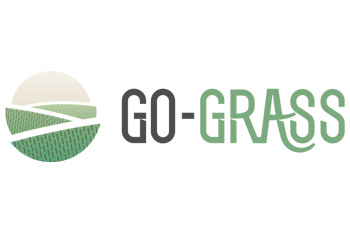 Grass clippings are increasingly becoming a sought-after raw material in Europe and worldwide, not only as animal feed and litter and thus as fertilizer, but also as a carbon sink and supplier. The future use of grass clippings is the focus of an EU research project, which goes by the English name “GO-GRASS”, runs for four years, from October 2019 to September 2023, and provides the partners with a total of 10 million euros in funding. The German demonstration project in the lower Oder valley is budgeted at just under 850,000 euros. Other partners are Hungary, Romania and Spain, who will later examine the demonstration projects developed by Sweden, Denmark and the Netherlands for their practical suitability. A total of 22 partners, for example universities, research institutes and nature conservation organizations, from eight European countries are involved. That is the project coördinator Leibniz Institute for Agricultural Engineering and Bioeconomy (ATB) in Potsdam.
Grass clippings are increasingly becoming a sought-after raw material in Europe and worldwide, not only as animal feed and litter and thus as fertilizer, but also as a carbon sink and supplier. The future use of grass clippings is the focus of an EU research project, which goes by the English name “GO-GRASS”, runs for four years, from October 2019 to September 2023, and provides the partners with a total of 10 million euros in funding. The German demonstration project in the lower Oder valley is budgeted at just under 850,000 euros. Other partners are Hungary, Romania and Spain, who will later examine the demonstration projects developed by Sweden, Denmark and the Netherlands for their practical suitability. A total of 22 partners, for example universities, research institutes and nature conservation organizations, from eight European countries are involved. That is the project coördinator Leibniz Institute for Agricultural Engineering and Bioeconomy (ATB) in Potsdam.
In Denmark, Germany, the Netherlands and Sweden, one type of use of grass is being examined in detail. In the German demonstration project, the production of biochar, also known as biochar for fertilization, is being investigated. The starting material used is the cut of a late, single mowing from the polder areas of the national park, for which there has so far been little use, for example in the production of biodiesel, bioethanol or biogas, as this late cut has a lower nutrient quality and a high degree of lignification. As a starting point for the production of biochar, however, this heterogeneous and moist grass clippings can certainly be considered. The carbonization is to take place in a pilot plant with the help of a thermochemical conversion (pyrolysis or hydrothermal carbonization) in an agricultural enterprise. The end product can be used on agricultural land to improve sandy soils with low soil values. The addition of biochar is said to have a positive influence on soil properties such as water retention capacity or nutrient exchange. Since the direct use of biochar from grass is currently not permitted in Germany, this biochar is added to the bedding as an intermediate step. The biochar in the litter binds moisture, but also organic and mineral nitrogen compounds in the stables. Animal excretions are absorbed by the biochar, which of course improves the stable climate and thus directly benefits the animal welfare, but also the people who work there.
In Sweden is made of reed grass by briquetting hygienized litter for animal husbandry. After being used in the barn, the litter material can also be used as fertilizer or used in biogas production.
In the Netherlands is made from landscape and lane verge grass paper. This project is particularly noteworthy, as grass is processed here, which has so far only found little use, mainly because of its pollution with heavy metals or other impurities. Through a certain pretreatment and fermentation, fiber components are extracted from the mowing and processed into high-quality paper in further processes.
In Denmark is extracted with the help of a biorefinery from grass from nitrate-sensitive areas and from paludiculture. The product is a protein concentrate that can be added to feed as a nutritional supplement for pigs and chickens. The protein concentrate contains a lot of energy and important nutrients for the animals. In the future, the import of soy-based protein could be reduced with grass protein.
We are proud to be able to represent Germany in this important research project and will keep our readers up to date on the progress made here in Germany, but also with our European partners.
Additional Information
You can find out about the current developments at GO-GRASS on the GO-GRASS homepage.
Twitter: https://twitter.com/GoGrassEU
Linkedin: https://www.linkedin.com/company/49644870
Instagram: https://www.instagram.com/gograsseu/
Financing: This project has been funded by the European Union’s Horizon 2020 research and innovation program under grant agreement No. 862674.
Project manager
Dr. Gabriele Joanna KOWALSKI supervises the projects GO-GRASS and LIFE AMPHICON as a project manager for the Association of Friends of the German-Polish European National Park Lower Oder Valley e.V.
Gabriele Kowalski is responsible for coördinating the tasks of the National Park Association in the context of two EU projects: LIFE AMPHICON and GO-GRASS . In addition to the financial administration, she oversees the implementation of nature conservation measures, communication with regional and national partners and public relations for both projects on site. In addition to these tasks, she is the new contact person for questions about ours Bison .
Gabriele Kowalski did her doctorate at the University of Potsdam in animal ecology on movement behavior in fragmented landscapes (title: “Animal movement patterns across habitats: connecting biodiversity”). During her studies at the universities in Marburg and Bielefeld, her focus was on topics relating to nature and species protection, behavioral research and population genetics. Early on in her studies, Gabriele Kowalski’s paths and the National Park Association crossed during an internship lasting several weeks. Gabriele Kowalski speaks German and Polish as a native speaker and speaks English fluently, so she is an ideal addition to the team of the National Park Association.
Telephone: +49 3332–2198-25 (office hours only on Thursday)
Curriculum vitae: https://www.linkedin.com/in/gabriele-joanna-kowalski/
